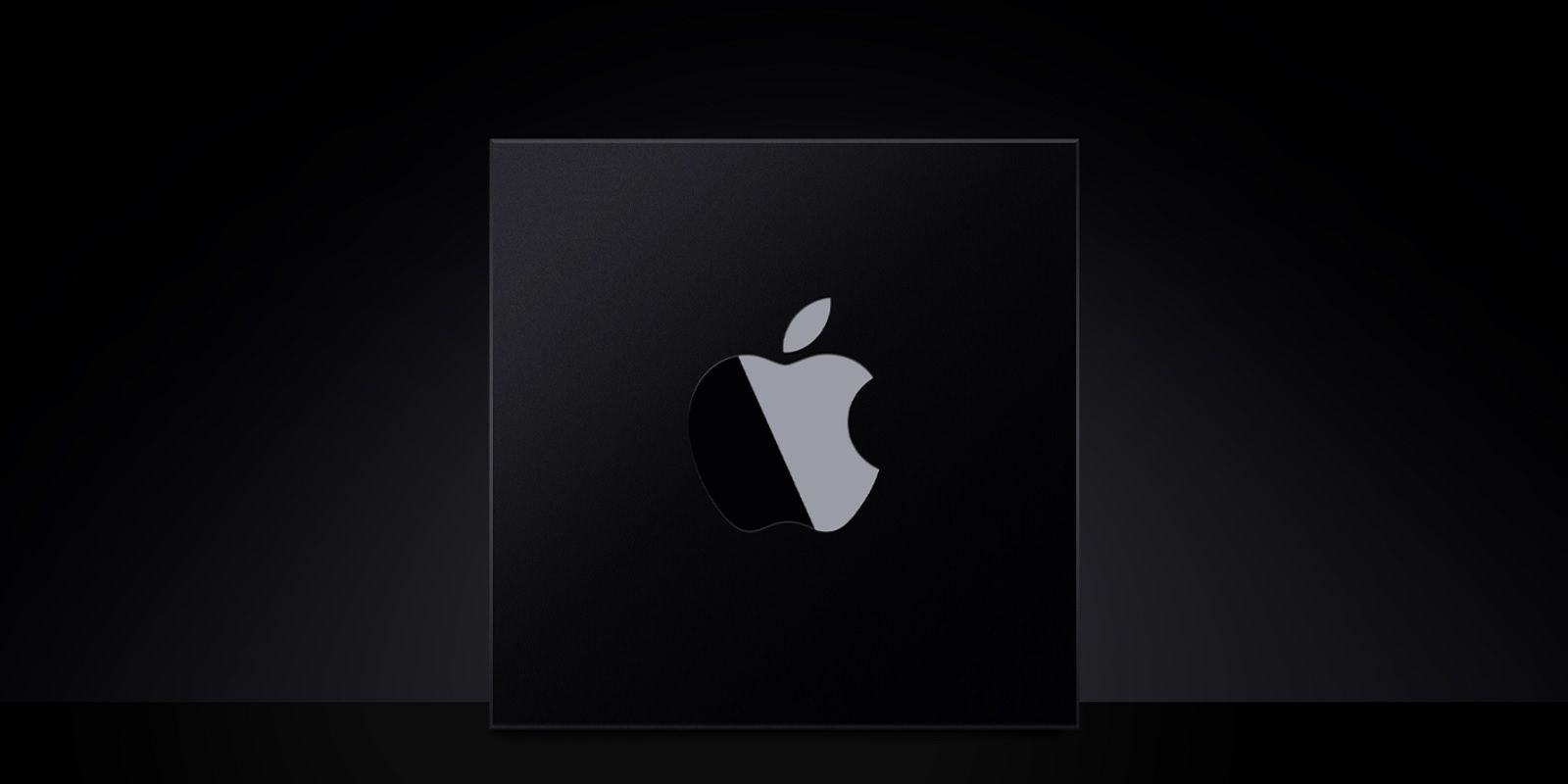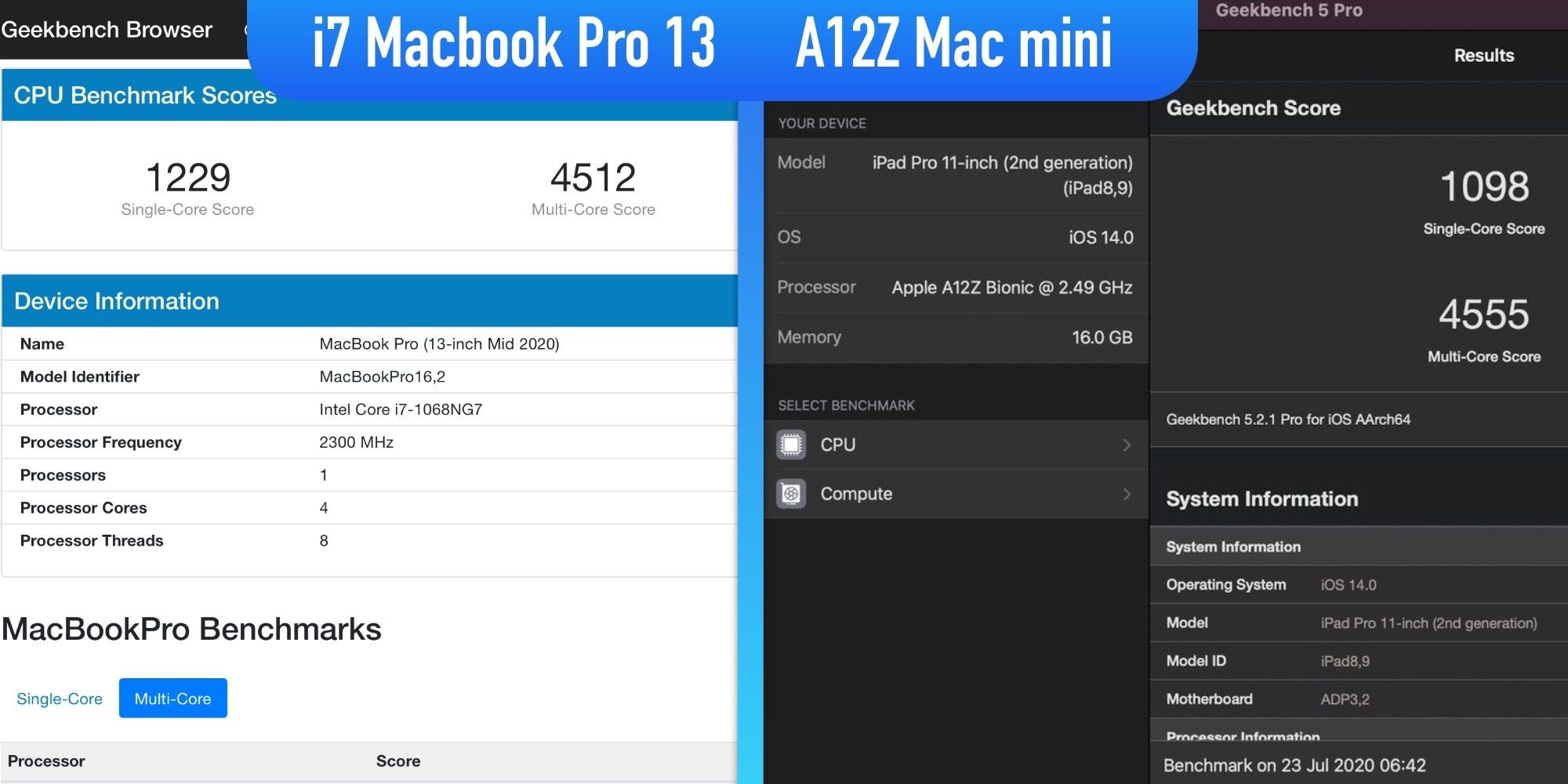Apple's Developer Transition Mac mini is the first MacOS computer to use Apple Silicon. This means the CPU is not based on Intel like every other Mac. Instead it uses the same type of CPU that powers Apple’s iPad Pro tablets. While benchmarks have been available since the end of June, the speed testing had to be run through a second layer of software that converted x86 instructions to A-series instructions. Now we have our first look at what can be expected when running a performance test via A-series specific code on the Transition Mac mini. The Developer Transition Mac mini is a developer-only device meant to aid the transition to Apple Silicon. Developers can recompile and test Mac apps to ensure they run on the new A-series processors.
Apple has made a major processor change before, so this is nothing new for the company. In 2005, Apple stopped trying to find ways to make the PowerPC seem as fast as its x86 competitors. Everyone by that time knew Intel and therefore, PCs were the speed kings and it really wasn’t close. Apple announced that with the new Intel-based Macs, existing Mac apps would still work via Rosetta, an enhanced form of emulation software layer that benefits from tighter integration with the OS than any third-party emulation software can achieve. Here, we are again with a processor change eased by a Rosetta layer of software to keep the old apps working, despite such a big change to an integral part of the computer.
The benchmark used was Geekbench 5 Pro. As indicated by Wccftech, the developer put in some significant effort to get a native version of Geekbench to run on their developer Mac mini. As you can see by the comparison image (below) showing side-by-side multi-core scores for this new Mac mini and the i7 version of the 2020 Macbook Pro, this is a powerful device. With benchmarks of 1098 for single-core and 4555 for multi-core, this is basically on par with entry-level Intel Macs. Even the i7 variant of the 2020 Macbook Pro 13 shows 1229 single-core and 4512 multi-core. Compare that with previous benchmarks that were run through Rosetta, that had a single-core rating of 840 and multi-core of 2900. That’s a third more speed when running processor intensive tasks natively, rather than through Rosetta. Note that while the results show the name of the device as iPad Pro 11, this is a similarly configured device and identifying it this way is common with pre-release device tests. This is indeed the Apple Silicon Mac mini. Also note the RAM is 16GB, which matches the Transition Mac mini. For reference, the iPad Pro has a maximum of 6GB RAM.
Important Notes About Benchmarks
Benchmarks are not the same thing as real world performance, but do help quantify speed and are best when used to compare similar devices. For example, comparing an iPad to a laptop was not a good comparison since many other components were unmatched, such as hard drive and memory capacity. This means an iPad could score well on a benchmark and still not be sufficient for some traditional computer tasks. For example, if you edit 4K videos and add effects and layering, more memory will allow larger chunks of data to be processed together, speeding the work and giving a laptop or desktop with lots of RAM an advantage, despite similar benchmark scores. If you spend more time writing, a small amount of memory is sufficient for that task and the benchmark relates more to how snappy the device feels and whether you experience any lag with day-to-day use. Also note that it will take time for Mac apps to be recompiled and become available in Native code. Until that time, Mac apps will run under Rosetta emulation mode, in effect simulating an x86 computer which saps a third of the multi-core speed and slows single-core speed a bit as well.
The Apple Silicon Mac mini shows benchmarks on par with entry-level Intel Macs and the mini has RAM and storage options similar to the Intel version. However, it isn't yet available for consumers and the apps are mostly running through Rosetta, making performance slower. Therefore, what has been learned here? Mainly that there is good potential and that it's worth keeping an eye on this story as it develops. When the new Apple Silicon Macs are announced this fall, it will be exciting to see how deeply Apple embraces this change and how many Macs will offer an Apple Silicon option. Apple has stated that Intel based Macs will continue to be made in the short term and Intel Macs will continue to be supported with OS updates. As a result, this may be a slow transition. Of course, it is also likely to depend on how quickly developers embrace the change as well. While early adopters are unlikely to be deterred, most will need to see plenty of Mac apps with native support before accepting the new Apple Silicon Macs.
Source: Wccftech


